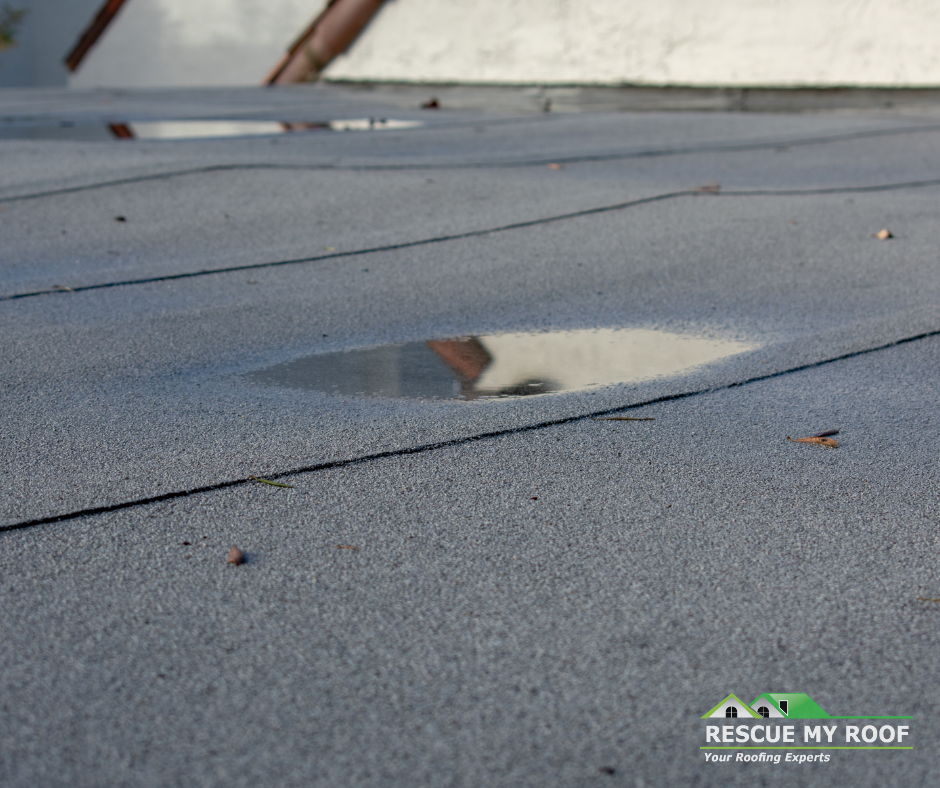Can You Layer A Flat Roof? ( 7 Reasons You Shouldn’t)
When it comes to roof renovations, especially for commercial buildings and modern homes, flat roofs are a popular choice. They offer a sleek, contemporary look and provide additional usable space.
However, if your property already has an asphalt roof, you might be tempted to save time and money by layering the new flat roof over the existing asphalt one. While this might seem like a practical solution, it’s fraught with potential problems.
Rescue My Roof has been a leader in the roofing industry for over a decade. We’ve talked down hundreds of homeowners from making poor home decisions. Today, we’re here to help you, too.
Here are the key reasons why you shouldn’t layer a flat roof over an asphalt roof:
1. Structural Concerns
Layering a flat roof over an existing asphalt roof adds significant weight to the building structure. Asphalt roofs are already heavy, and adding another layer can strain the structural integrity of your property.
This is especially problematic for older buildings that may not have been designed to support the extra load. Over time, this added weight can lead to sagging, cracking, and even potential collapse.
If your home is old, has foundational issues, or suspected structural damage, it’s best to do a total roof replacement – tear-off and all.
2. Moisture and Leak Issues

One of the primary functions of a roof is to keep water out. When you layer a flat roof over an asphalt roof, you create multiple layers where moisture can get trapped.
This trapped moisture can lead to mold growth, rot, and degradation of the roofing materials. Additionally, identifying the source of a leak becomes much more difficult with multiple layers, complicating repairs and increasing costs.
3. Ventilation Problems
Proper ventilation is crucial for maintaining the health of your roof and attic space. Asphalt roofs and flat roofs have different ventilation requirements.
Layering one over the other can disrupt the airflow, leading to increased humidity and temperature fluctuations. This can accelerate the deterioration of the roof materials and reduce the overall lifespan of your new flat roof.
4. Insulation Inefficiencies
Energy efficiency is a key consideration for any roofing system. Asphalt roofs and flat roofs have distinct insulation properties.
Layering a flat roof over an asphalt roof can compromise the insulation effectiveness, leading to higher energy costs for heating and cooling your building. Poor insulation can also result in uncomfortable indoor temperatures, affecting the overall comfort of your property.
5. Code Violations and Warranty Issues
Building codes and manufacturer warranties often prohibit layering new roofing materials over existing ones, particularly when it involves different types of roofing systems. Ignoring these regulations can result in code violations, leading to fines and potential legal issues.
Moreover, many roofing material manufacturers will void warranties if their products are installed over existing roofs, leaving you unprotected against defects and damages.
6. Reduced Lifespan

Flat roofs are designed to have a long lifespan when installed correctly. However, layering a flat roof over an asphalt roof can significantly reduce its durability. The underlying asphalt can continue to deteriorate, affecting the flat roof above it. This can lead to premature failure of your new roof, requiring costly repairs or replacement much sooner than expected.
7. Aesthetic and Practical Concerns
Layering roofs can result in an uneven, unattractive appearance. The added height from layering can create awkward transitions between roof sections, affecting the overall aesthetic of your building.
Additionally, maintenance and future roof repairs become more challenging and costly with multiple layers to navigate.
Should You Layer A Flat Roof Over Asphalt?
While layering a flat roof over an asphalt roof might seem like a cost-effective and time-saving solution, it is fraught with significant drawbacks. Structural issues, moisture problems, ventilation inefficiencies, and potential code violations are just a few of the reasons why this approach is not advisable.
Instead, for a durable, efficient, and aesthetically pleasing roof, it’s best to remove the existing asphalt roof before installing your new flat roof. This ensures proper installation, maximizes the lifespan of your roofing system, and ultimately protects your property investment. Always consult with professional roofing contractors to explore the best options for your specific needs and to ensure a safe and effective roofing solution.
Learn more with “How Professionals Repair Flat Roofs” and “How Long Does A Flat Roof Last?”
Are you looking for flat roof installation in southeastern Wisconsin? Rescue My Roof has got you covered. Contact us today to get a free estimate.


